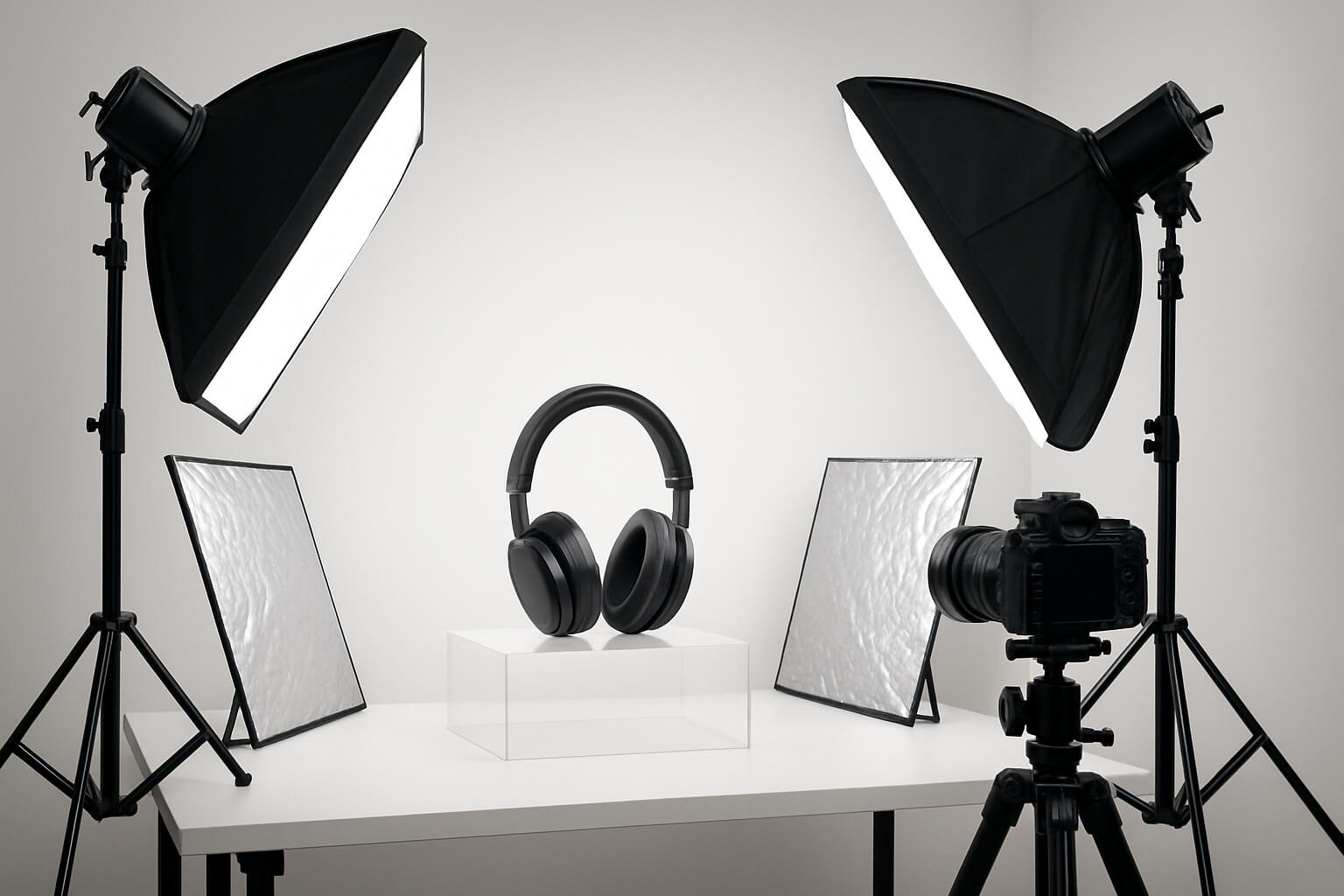June 06, 2025

In product photography, lighting is more than just illumination—it’s your storytelling tool. It defines shape, sets the mood, reveals texture, and draws the viewer’s eye to what matters. Whether you're capturing artisanal crafts, glossy tech gadgets, or jewelry, the right lighting setup can turn a simple object into a compelling image that sells.
In this guide, you'll learn the best lighting setups, gear recommendations, and pro tips that not only improve your photos—but help grow a profitable photography business.
When someone sees your product photo, lighting is what creates that first emotional reaction. Harsh shadows, poor exposure, or dull tones can instantly make even a premium product look cheap.
📘 Ready to take your skills pro? Learn how others launched and scaled their careers in this beginner’s guide to building a photography business and step-by-step path to going full-time.
Both types of light can produce stunning results—but they come with trade-offs depending on your environment and goals.
1. Natural Light
Use natural light when you're shooting near a window with indirect sunlight. Add reflectors to fill shadows and get a clean, airy look perfect for Etsy shops or Instagram.
2. Artificial Light
Artificial lighting is a must if you're shooting frequently or want consistency across hundreds of SKUs. LED panels, softboxes, and strobes allow you to fine-tune every photo.
Want to earn from your shots? Check out this guide on top websites to sell photos in 2025.
Getting the right tools ensures your lighting setup works efficiently and professionally—without wasting time in post-editing.
Adjustable, portable, and beginner-friendly. Use them for top-down flat lays, beauty products, or when recording BTS content for marketing.
Looking to earn passively? Learn how to sell your product photos online
Each product type demands a tailored lighting setup to best showcase its features. Here's how to approach them:
1. Clean White Background for eCommerce
White backgrounds are essential for clean, distraction-free product pages. They also help with background removal and automation.
2. Jewelry & Reflective Products
Position the lights carefully to highlight the sparkle of stones while avoiding mirror-like reflections that can ruin the shot.
3. Food & Textured Items
Consider using a backlight for transparent drinks or a top-down soft fill to reduce harsh overhead shadows.
Want to make your images searchable? Optimize product photos for SEO and social platforms.
Each lighting angle creates a different look. Knowing when to use them is key:
Want to protect your visual assets? Learn how to edit and secure your copyrighted photos.
Even the best lighting setup won’t grow your career unless paired with smart business practices. Here’s what pros are doing:
Here’s how to ensure every shoot runs smoothly:
Lighting is not just a technical detail—it’s a creative decision with real business impact. When done right, it makes your photos not only more beautiful but more effective. It boosts conversions, attracts clients, and elevates your brand.
Stay up to date with the newest tips, gear reviews, and step-by-step guides to elevate your photography journey from home and beyond.